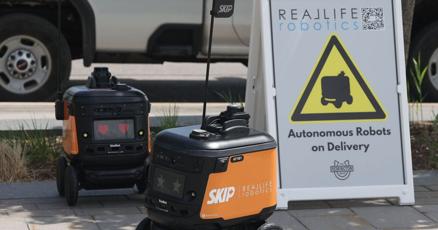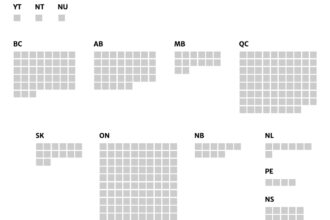In the quiet neighborhoods of Ontario, a silent revolution is rolling forward at three kilometers per hour. Squat, six-wheeled autonomous robots are navigating sidewalks with surprising dexterity, carrying everything from pizza to pad thai as part of Canada’s expanding experiment with autonomous delivery technology. These cooler-sized mechanical couriers represent not just a novelty but a fundamental shift in how Canadians receive their takeout orders.
“The first time I saw one, I thought someone had lost a fancy remote-control toy,” says Waterloo resident Maya Chen, who recently received her dinner via robot. “Then it stopped at my door, the compartment opened, and there was my order perfectly intact. It was like something from a sci-fi movie happening on my doorstep.”
The autonomous delivery initiative, which began as pilot projects in select Ontario municipalities, has expanded steadily over the past 18 months. Companies like Tiny Mile, Serve Robotics, and Kiwibot have deployed their mechanical messengers primarily in university towns and dense urban corridors, where shorter delivery distances make the technology particularly efficient.
These robots rely on a sophisticated array of sensors, cameras, and AI algorithms to navigate urban environments. They can detect and avoid pedestrians, wait patiently at crosswalks, and even handle modest weather challenges. During complex scenarios, human operators can temporarily take control remotely, ensuring deliveries reach their destinations safely.
Ontario’s regulatory framework has proven surprisingly accommodating to this technological evolution. The province’s Automated Vehicle Pilot Program established guidelines that, while originally focused on autonomous passenger vehicles, created a pathway for delivery robots to operate legally on public sidewalks.
“Ontario has positioned itself as a leader in autonomous technology regulation,” explains Dr. Aisha Mahmood, director of the Centre for Autonomous Systems Research at the University of Waterloo. “Rather than creating barriers, the province has adopted an approach that balances innovation with public safety concerns.”
The economic implications extend beyond the novelty factor. For restaurants facing persistent labor shortages and rising delivery app commission fees, robot delivery offers potentially significant cost savings. Delivery fees typically range from $1.99 to $3.99, considerably less than human-powered alternatives.
Environmental benefits also factor into the equation. These electric robots produce zero direct emissions and consume far less energy than conventional delivery vehicles. A recent study from McMaster University suggests that widespread adoption of autonomous delivery could reduce last-mile delivery emissions by up to 18% in dense urban areas.
However, the transition hasn’t been entirely smooth. Privacy advocates have raised concerns about the cameras these robots use to navigate, questioning how the data is stored and utilized. Labor groups worry about potential job displacement for human delivery workers, particularly in a sector that has become an employment lifeline for many newcomers to Canada.
“We need to ensure this technology enhances rather than undermines employment opportunities,” says Omar Hassan of the Canadian Labour Congress. “Innovation shouldn’t come at the cost of livelihoods.”
Technical limitations also persist. Most robots can only manage relatively small orders, typically weighing less than 10 kilograms. Their range remains limited to about 2-3 kilometers from restaurants, and they struggle with certain terrain obstacles like construction zones or snow-covered sidewalks.
Despite these challenges, investment in the sector continues to accelerate. Toronto-based Tiny Mile recently secured $17 million in venture funding to expand their fleet across Ontario, while several international players are eyeing Canadian market entry.
For consumers, the experience often transforms skepticism into enthusiasm. Customer satisfaction ratings consistently exceed 90%, with users citing the novelty factor, reliability, and often lower delivery fees as key advantages.
The technology continues to evolve rapidly. Next-generation robots in development feature improved cold/hot storage compartments, enhanced all-weather capabilities, and faster speeds. Some companies are exploring integrations with smart building technology that would allow robots to enter apartment buildings securely and notify residents of their arrival.
As these mechanical messengers become increasingly common fixtures on Ontario sidewalks, they raise profound questions about how technology is reshaping urban spaces and everyday interactions. Will the novelty of robot delivery evolve into normalized infrastructure, and how might our communities adapt to accommodate these new technological citizens? The answer is rolling toward us, one delivery at a time.
























